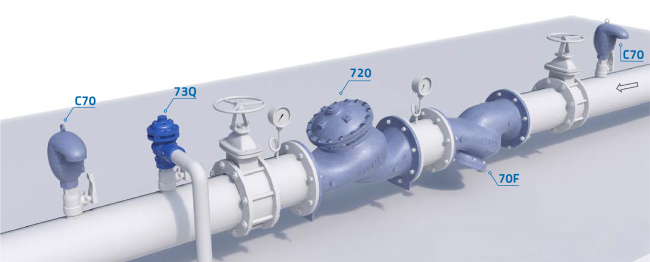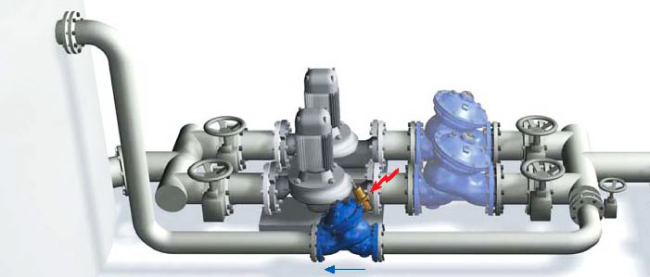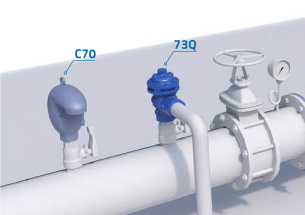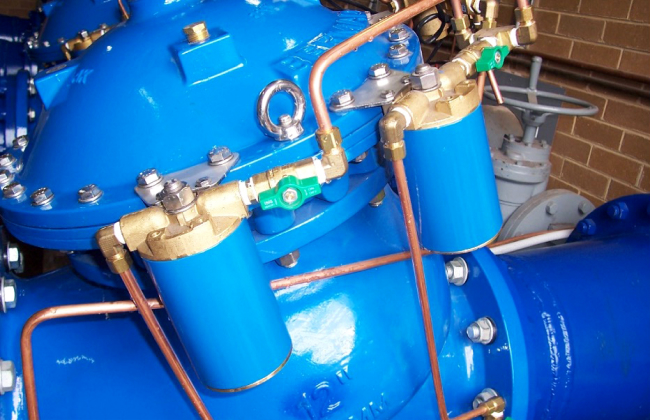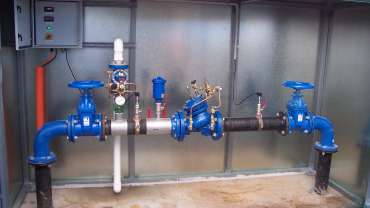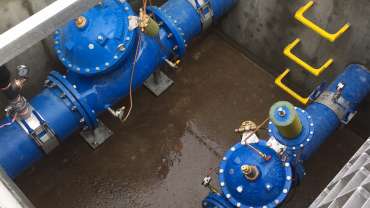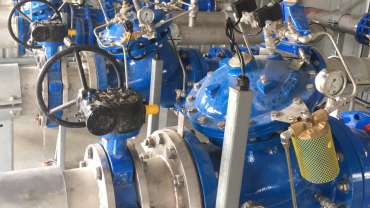Pressure Relief Valve Function and Applications
![Article_Header_HDAPVW]()
This piece highlights how Bermad pilot-operated pressure relief valves (model 730) function, showcasing features and applications in a way that’s accessible for both users and operators.
A pressure relief valve is typically installed on a tee off a main supply pipeline. Pressure release valves are designed to open and discharge excessive pressure above the valve set point, either to atmosphere the pressure or pipe it away to a different location.
Pressure relief valves are also commonly called circulating relief valves or pressure sustaining relief valves.
What are the different applications for pressure relief valves?
Although pressure relief valves perform a specific function, they can be provisioned and installed in a wide variety of applications. Some of the common applications include:
Downstream of a pressure reducing valve on a pipeline

The pressure relief valve (730) is installed immediately downstream of a pressure reducing valve (720)
In critical supply pipelines with very sensitive old pipeline infrastructure, pressure reducing valves are often supplied on-line. This helps to ensure pipeline pressures operate at lower, safer working conditions. Pressure relief valves are often fitted immediately downstream of a pressure reducing valve; this relieves any excessive pressure in the event of PRV failure or a rapid decrease in supply downstream.
Downstream of a pump, to circulate excessive pressure and flow
Often in a fixed-speed pump under low demand times, a pump can run back on its curve to a point that is underisable as the pressure rises. This creates the potential for the water to increase in temperature. In these instances, a circulating pressure relief valve is used to keep the pressure at a safe working level, and to protect the pump.

On a tee branch off a pipeline, to relieve surges
In larger pipelines, there may be many components in a network that generate rapid reduction in flows. In turn, these rapid reductions in flow generate pressure spikes. Often, a pressure relief valve is installed close to the problematic components to relieve the excess pressure.

What are the key components of a pressure relief valve?
The Bermad 730 pressure reducing valve includes a number of key components that ensure high performance in pressure reducing applications.
- Valve body: The Y-pattern single-chamber 705 series valve body has an internal V-port throttling plug, which enables the valve to regulate flows from zero upwards with smooth transition of flow. For further detail, watch this animation showcasing the V-port plug and valve body in detail:
- Pilot regulator: The Bermad two-way pilot regulators are the brains of the valve. The regulators vary the flow—both to and from the valve control chamber—in order for the valve to regulate the upstream pressure to a constant value. They work in conjunction with a pre-orifice (or needle valve) in order to regulate in a timely manner, to keep the pressure at a constant. View more data and detail relating to pilot regulators.
- Large control filter: In order for the valve to work with minimum maintenance and fault-free operation, it is critical to filter the water entering the pilot. The Bermad large control disc filter is an oversized filter with a series of fully cleanable disc elements which keep organic and inorganic particles greater than 200 microns out of the pilot. Being over-sized reduces the frequency of maintenance and reduces the risk of valve malfunction, should a filter become blocked by dirt or debris in the water. Find out more about Bermad large control filters.

Commissioning procedure of a pressure reducing station with relief valve
How to learn more about pressure relief valves
At Bermad, we’re committed to upskilling water professionals and providing all the support you need to get the most out of our products. If you’re interested in further details or information, you can:
- Visit our detailed product page for the 730 valve.
- Visit the Bermad training facility in your area, for hands-on interactive training sessions on the use and application of pressure relief valves and more.
- Contact your nearest sales office to discuss products with experienced Bermad technical specialists.
- Use our live field support service for assistance in the operation of any valve.
Make enquiry
Online Enquiry Close
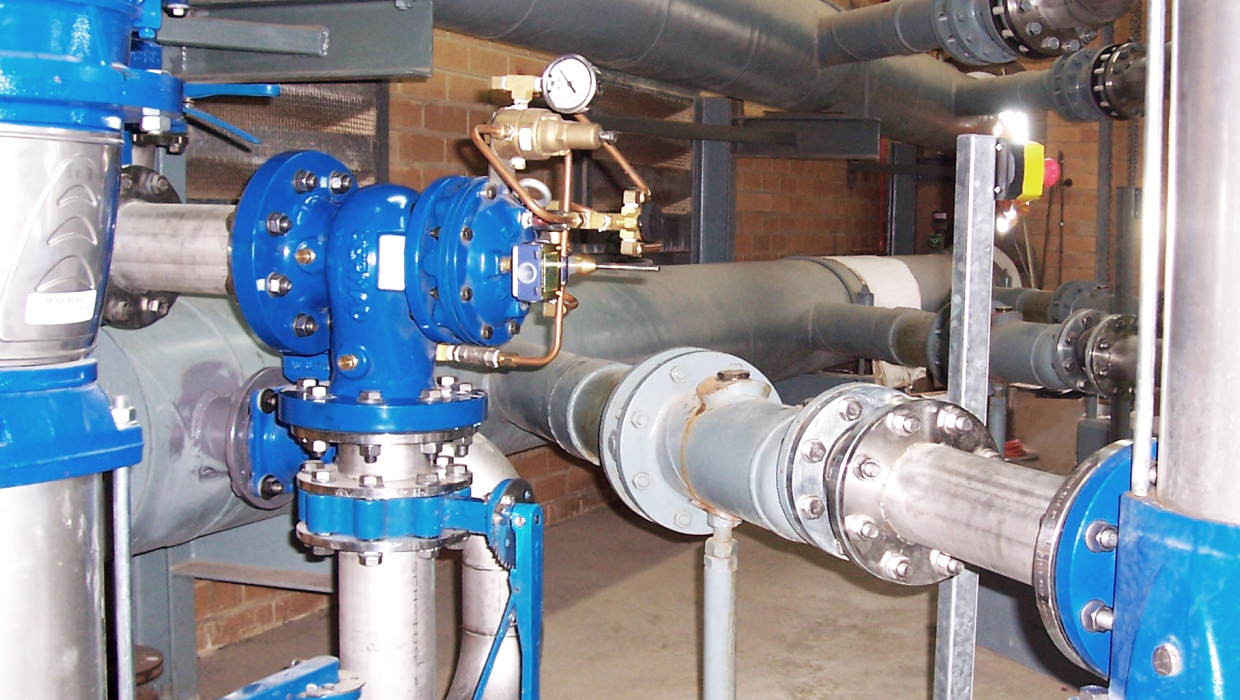
This piece highlights how Bermad pilot-operated pressure relief valves (model 730) function, showcasing features and applications in a way that’s accessible for both users and operators.
A pressure relief valve is typically installed on a tee off a main supply pipeline. Pressure release valves are designed to open and discharge excessive pressure above the valve set point, either to atmosphere the pressure or pipe it away to a different location.
Pressure relief valves are also commonly called circulating relief valves or pressure sustaining relief valves.
What are the different applications for pressure relief valves?
Although pressure relief valves perform a specific function, they can be provisioned and installed in a wide variety of applications. Some of the common applications include:
Downstream of a pressure reducing valve on a pipeline
The pressure relief valve (730) is installed immediately downstream of a pressure reducing valve (720)
In critical supply pipelines with very sensitive old pipeline infrastructure, pressure reducing valves are often supplied on-line. This helps to ensure pipeline pressures operate at lower, safer working conditions. Pressure relief valves are often fitted immediately downstream of a pressure reducing valve; this relieves any excessive pressure in the event of PRV failure or a rapid decrease in supply downstream.
Downstream of a pump, to circulate excessive pressure and flow
Often in a fixed-speed pump under low demand times, a pump can run back on its curve to a point that is underisable as the pressure rises. This creates the potential for the water to increase in temperature. In these instances, a circulating pressure relief valve is used to keep the pressure at a safe working level, and to protect the pump.
On a tee branch off a pipeline, to relieve surges
In larger pipelines, there may be many components in a network that generate rapid reduction in flows. In turn, these rapid reductions in flow generate pressure spikes. Often, a pressure relief valve is installed close to the problematic components to relieve the excess pressure.
What are the key components of a pressure relief valve?
The Bermad 730 pressure reducing valve includes a number of key components that ensure high performance in pressure reducing applications.
- Valve body: The Y-pattern single-chamber 705 series valve body has an internal V-port throttling plug, which enables the valve to regulate flows from zero upwards with smooth transition of flow. For further detail, watch this animation showcasing the V-port plug and valve body in detail:
- Pilot regulator: The Bermad two-way pilot regulators are the brains of the valve. The regulators vary the flow—both to and from the valve control chamber—in order for the valve to regulate the upstream pressure to a constant value. They work in conjunction with a pre-orifice (or needle valve) in order to regulate in a timely manner, to keep the pressure at a constant. View more data and detail relating to pilot regulators.
- Large control filter: In order for the valve to work with minimum maintenance and fault-free operation, it is critical to filter the water entering the pilot. The Bermad large control disc filter is an oversized filter with a series of fully cleanable disc elements which keep organic and inorganic particles greater than 200 microns out of the pilot. Being over-sized reduces the frequency of maintenance and reduces the risk of valve malfunction, should a filter become blocked by dirt or debris in the water. Find out more about Bermad large control filters.
Commissioning procedure of a pressure reducing station with relief valve
How to learn more about pressure relief valves
At Bermad, we’re committed to upskilling water professionals and providing all the support you need to get the most out of our products. If you’re interested in further details or information, you can:
- Visit our detailed product page for the 730 valve.
- Visit the Bermad training facility in your area, for hands-on interactive training sessions on the use and application of pressure relief valves and more.
- Contact your nearest sales office to discuss products with experienced Bermad technical specialists.
- Use our live field support service for assistance in the operation of any valve.

